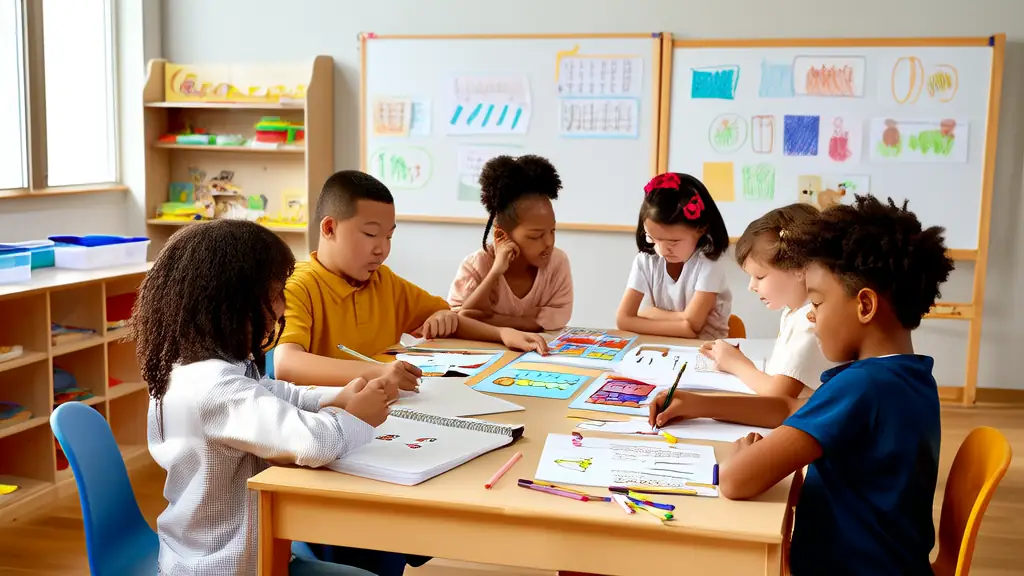
Practical Methods for Developing Critical Thinking: A Senior K12 Educator's Perspective
As a veteran educator with over two decades of experience in the K12 sector, I have had the privilege of witnessing the transformation of young minds from passive learners to active thinkers. The journey of nurturing critical thinking skills in students is both challenging and rewarding. In this article, I will share insights drawn from my personal experiences, theoretical foundations, and practical methods that have proven effective in fostering critical thinking among students.
Introduction
One of the most memorable moments in my teaching career was when a 7th-grade student, Sarah, presented a well-researched argument on the impact of social media on mental health. Her presentation was not only well-structured but also included a nuanced understanding of the topic, backed by credible sources. This moment highlighted the importance of developing critical thinking skills in our students. It is not just about memorizing facts; it is about equipping them with the ability to analyze, evaluate, and synthesize information to form well-reasoned judgments.
Theoretical Analysis
Understanding Critical Thinking
Critical thinking is a cognitive process that involves analyzing, evaluating, and synthesizing information to make informed decisions or judgments. According to Bloom's Taxonomy, critical thinking encompasses higher-order thinking skills such as analysis, evaluation, and creation. These skills are essential for students to navigate the complexities of the modern world and to become lifelong learners.
Child Psychology and Educational Theories
From a child psychology perspective, Jean Piaget's theory of cognitive development provides a framework for understanding how children think and learn. Piaget proposed that children go through distinct stages of cognitive development, each characterized by different ways of thinking. For example, during the formal operational stage (ages 11 and up), adolescents begin to think more abstractly and can engage in hypothetical reasoning. This stage is particularly crucial for developing critical thinking skills.
Additionally, Lev Vygotsky's sociocultural theory emphasizes the role of social interaction in cognitive development. According to Vygotsky, learning is a social process where students learn from and with others. This theory underscores the importance of collaborative learning and peer discussions in developing critical thinking skills.
Main Body
Practical Cases and Observations
In my classroom, I have implemented various strategies to foster critical thinking. One of the most effective approaches has been the use of Socratic seminars. During these sessions, students engage in deep, open-ended discussions about a text or topic. For example, after reading a chapter from "To Kill a Mockingbird," students were asked to discuss the themes of justice and prejudice. The discussion was guided by open-ended questions, and students were encouraged to support their arguments with evidence from the text. This method not only enhanced their comprehension but also developed their ability to construct and defend arguments.
Another practical case involved a project-based learning activity where 8th-grade students were tasked with creating a public service announcement (PSA) on a social issue of their choice. Students had to research the issue, gather data, and present their findings in a compelling way. This project required them to analyze information, evaluate different perspectives, and synthesize their ideas into a coherent message. The end result was a series of thought-provoking PSAs that showcased their critical thinking skills.
Specific Methods for Developing Critical Thinking
- Questioning Techniques: Encourage students to ask and answer open-ended questions. Questions like "What if...?" and "How does this relate to...?" prompt deeper thinking and analysis. For example, after a science experiment, instead of asking, "What did you observe?" ask, "Why do you think this happened, and what other factors could have influenced the outcome?"
- Collaborative Learning: Promote group work and peer discussions. Collaborative learning allows students to share ideas, challenge each other's thinking, and build on each other's insights. For instance, in a history class, students can be divided into small groups to debate the causes and consequences of a significant event, such as the American Revolution.
- Problem-Solving Activities: Incorporate real-world problems and case studies into the curriculum. Problem-solving activities require students to apply their knowledge to practical situations, fostering critical thinking and decision-making skills. For example, in a math class, students can be given a budgeting problem where they need to allocate funds for a school event, considering various constraints and priorities.
- Reflective Journals: Encourage students to keep reflective journals where they can write about their learning experiences, challenges, and insights. Reflection helps students to internalize their learning and develop metacognitive skills. For example, after a science experiment, students can write about what they learned, what went well, and what they would do differently next time.
- Debates and Simulations: Organize debates and simulations to engage students in critical thinking. Debates require students to research, organize, and present arguments, while simulations allow them to experience and analyze complex situations. For example, a mock United Nations simulation can help students understand global issues and the dynamics of international relations.
Conclusion
Developing critical thinking skills in students is a multifaceted and ongoing process that requires a combination of theoretical understanding, practical application, and a supportive learning environment. By incorporating questioning techniques, collaborative learning, problem-solving activities, reflective journals, and debates, educators can create a rich and engaging learning experience that fosters critical thinking.
As educators, we must remember that the goal is not just to impart knowledge but to equip students with the tools to think critically, solve problems, and make informed decisions. By doing so, we are preparing them not only for academic success but also for the challenges and opportunities of the future.
Let us continue to inspire and nurture the critical thinkers of tomorrow, one lesson at a time.